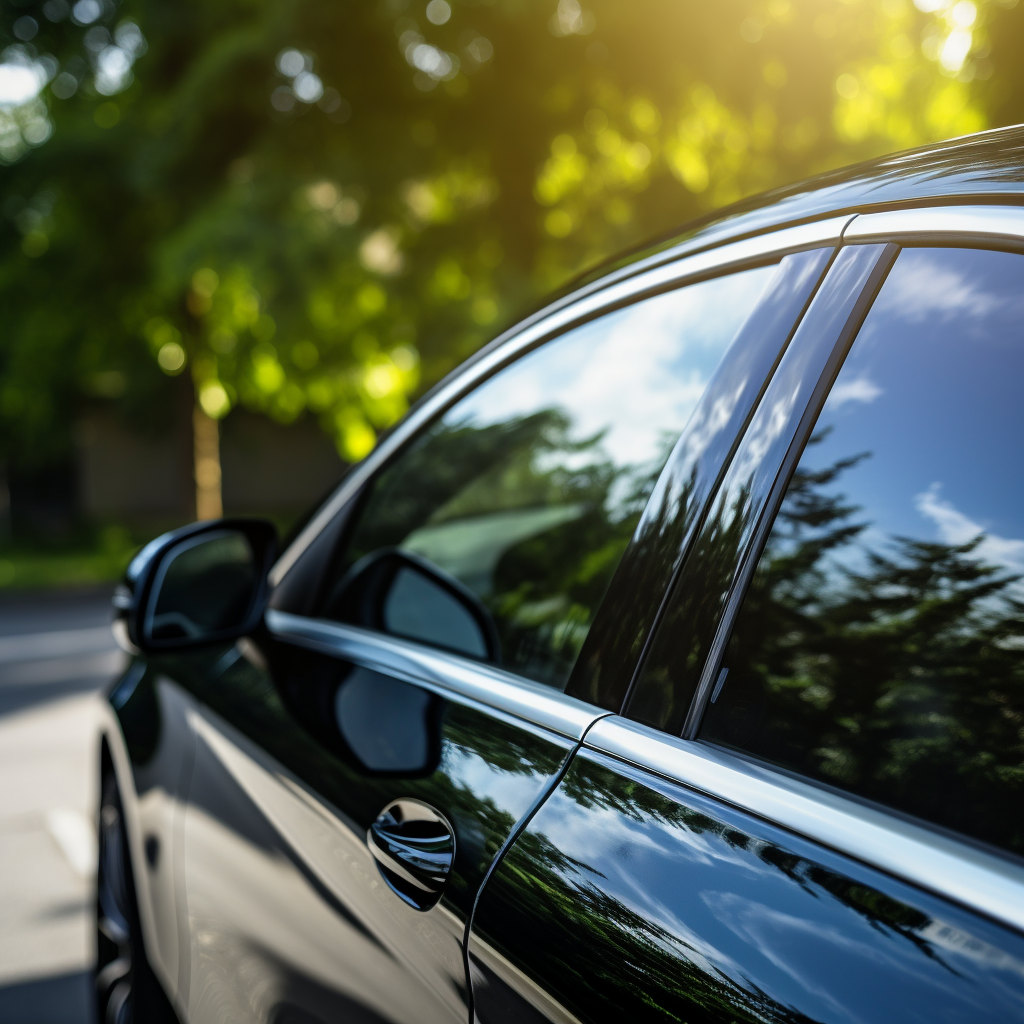
Automotive window tint is a popular choice for many car owners, as it not only enhances the appearance of their vehicles but also provides several practical benefits. However, one common concern among car owners is whether window tint fades over time.
FalseFalseWhile window tint fading is a possibility, it is important to note that not all tints are created equal. The quality of the tint itself, as well as the installation process, plays a significant role in determining its longevity. Additionally, external factorIn this article, we will delve into this topic and explore the various factors that contribute to window tint fading.s such as sunlight and heat also contribute to the fading of window tint. By understanding these factors and taking necessary precautions, car owners can ensure that their automotive window tint remains vibrant and functional for years to come.
Factors that Contribute to Window Tint Fading
Did you know that there are several factors that can cause automotive window tint to fade? One of the main culprits is exposure to sunlight. The UV rays from the sun can penetrate the tinted film and break down its molecular structure over time. This leads to the fading of the tint, making it less effective in blocking out the sun’s rays and reducing glare. Additionally, prolonged exposure to sunlight can also cause the adhesive that holds the tint to the window to weaken, leading to peeling and further deterioration of the tint.
Another factor that contributes to window tint fading is the quality of the tint itself. Low-quality tints are more prone to fading as they may not have the necessary UV protection or may have a thinner film that is more susceptible to damage. It is important to choose a high-quality tint that is specifically designed to resist fading and to have it professionally installed to ensure its longevity. Furthermore, environmental factors such as pollution, dirt, and chemicals can also accelerate the fading process. These contaminants can accumulate on the surface of the tint, causing it to degrade faster and lose its original appearance. Regular cleaning and maintenance can help minimize the impact of these factors and prolong the life of the window tint.
The Role of Sunlight in Fading Window Tint
Imagine how sunlight can gradually alter the appearance of your car’s tint over time. Sunlight plays a significant role in fading automotive window tint. When sunlight hits the tinted windows, it initiates a process called photo-oxidation. This process causes the molecules in the tint to break down and lose their color. The longer the tint is exposed to sunlight, the more likely it is to fade.
Ultraviolet (UV) rays are the main culprit behind window tint fading. These rays are part of the sun’s natural light spectrum and are responsible for causing damage to various materials, including the tint. UV rays can penetrate through the windows and break down the chemical composition of the tint, leading to discoloration and fading. Additionally, heat from sunlight can also contribute to tint fading. The combination of UV rays and heat can speed up the deterioration process, causing the tint to fade even faster.
To protect your car’s window tint from fading, it is essential to choose a high-quality tint film that has UV protection. UV-protective tints are specifically designed to block out a significant portion of the harmful UV rays, minimizing the risk of fading. Regularly cleaning and maintaining your tinted windows can also help prolong their lifespan and prevent fading. By keeping your windows clean and using appropriate cleaning products, you can remove any dirt or debris that may contribute to the deterioration of the tint.
Effects of Heat on Automotive Window Tint
When sunlight hits tinted windows, the heat accelerates the breakdown of the tint, causing it to lose color and deteriorate over time. The heat from the sun causes the adhesive that holds the tint to the window to weaken, leading to bubbling, cracking, and peeling. This not only affects the appearance of the tint but also reduces its effectiveness in blocking heat and UV rays.
The effects of heat on automotive window tint can be particularly damaging in hot climates or during summer months. The intense heat can cause the tint to fade unevenly, with areas directly exposed to sunlight fading more quickly. Additionally, the heat can cause the tint to become more brittle, making it more prone to cracking and peeling. To protect automotive window tint from the damaging effects of heat, it is important to choose high-quality tint materials and have them professionally installed. Regular maintenance, such as cleaning the tinted windows with non-abrasive products, can also help prolong their lifespan.
Avoiding Fading with Proper Installation and Quality Materials
By ensuring proper installation and using high-quality materials, one can effectively prevent the fading of automotive window tint caused by heat. When it comes to installation, it is crucial to have the tint applied by a professional who has the necessary skills and experience. A proper installation includes ensuring that the window is thoroughly cleaned before applying the tint, as any dirt or debris can cause the tint to peel or bubble over time. Additionally, the installer should use a squeegee or heat gun to smooth out any wrinkles or air bubbles, as these can also contribute to fading.
In addition to proper installation, using high-quality materials is essential for preventing fading. Opting for a reputable brand of window tint that offers UV protection is key. These tints are designed to block out harmful UV rays, which can not only fade the tint but also damage the interior of the car. High-quality tints are also more resistant to discoloration and can withstand prolonged exposure to heat without fading. Investing in a good quality window tint may cost more initially, but it will save you money in the long run as you won’t have to replace it as frequently. By prioritizing proper installation and using high-quality materials, you can ensure that your automotive window tint remains vibrant and fade-free for years to come.
Tips for Maintaining and Extending the Lifespan of Automotive Window Tint
To keep your car’s window tint looking fresh and lasting longer, follow these simple maintenance tips. First and foremost, avoid using abrasive materials or harsh chemicals when cleaning your tinted windows. Instead, opt for a mild soap or window cleaner and a soft cloth or sponge. Gently wipe the surface of the tinted windows, being careful not to apply too much pressure. This will help prevent any scratching or damage to the tint film.
In addition to gentle cleaning, it’s important to avoid rolling down the windows for at least a few days after the tint installation. This will allow the adhesive to fully cure and bond with the glass, ensuring a long-lasting result. Furthermore, try to park your car in shaded areas or use a sunshade to protect the tinted windows from direct sunlight. UV rays can cause the tint to fade over time, so minimizing exposure to sunlight can help extend its lifespan. By following these maintenance tips, you can keep your car’s window tint looking vibrant and prevent premature fading.
Frequently Asked Questions
How long does automotive window tint typically last before it starts to fade?
Automotive window tint typically lasts for several years before it starts to fade. The exact duration can vary depending on factors such as the quality of the tint and exposure to sunlight.
Can I apply window tint myself, or should I hire a professional installer?
It is recommended to hire a professional installer for applying window tint. While it is possible to do it yourself, professionals have the expertise and tools to ensure a high-quality and long-lasting installation.
Is it possible to prevent window tint from fading completely?
It is not possible to completely prevent automotive window tint from fading. Over time, exposure to sunlight and other factors will cause the tint to fade, regardless of preventive measures taken.
Does the type of vehicle I have affect how quickly the window tint fades?
The type of vehicle you have does not affect how quickly the window tint fades. The fading of window tint is primarily influenced by factors such as sunlight exposure, quality of tint film, and maintenance.
Are there any specific cleaning products or techniques that can help preserve the lifespan of automotive window tint?
There are specific cleaning products and techniques that can help preserve the lifespan of automotive window tint. It is important to avoid using abrasive materials or ammonia-based cleaners, and instead opt for mild soapy water and a soft cloth.
Conclusion
In conclusion, automotive window tint can indeed fade over time due to various factors such as sunlight exposure and heat. Sunlight is a major contributor to fading as the UV rays can cause the tint to deteriorate and lose its color. Additionally, heat can also accelerate the fading process by causing the adhesive to weaken and the tint to bubble or peel.
However, with proper installation and the use of high-quality materials, the lifespan of automotive window tint can be extended. It is important to choose a reputable installer who knows how to properly apply the tint and ensure that it is securely attached to the windows. Regular maintenance, such as cleaning the tint with non-abrasive products and avoiding harsh chemicals, can also help preserve its color and clarity. By following these tips, car owners can enjoy the benefits of window tint for a longer period of time.






Comments are closed.